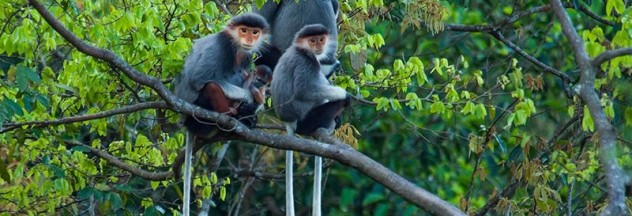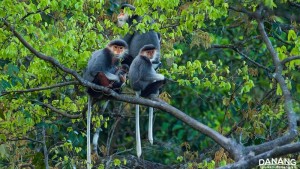Da Nang City is known for its several conservation areas which feature some of the world’s most beautiful and one-of-a kind plants and animals.
The Son Tra Natural Conservation Area, the Ba Na-Nui Chua Natural Conservation Area and the Nam Hai Van Landscape Protection Area cover 31,114.5 hectares, making up 54.4% of the city’s forested area in general.
The Son Tra Natural Conservation Area is especially vulnerable because a large number of organisms live in this ecosystem, 1,000 species of flora and 300 wild animals. There are more than 300 red-shanked douc langurs which call the Son Tra their home. 37 of the total number of species are considered “need-to-be-protected” and “priority.”
Son Tra Peninsula is made up of 4,400 hectares of protected land, but when 17 tourism enterprises suddenly arrived occupying one-fourth of the total area, specifically 1,029.6 hectares, it brought immediate harm to the ecosystem. Three douc langurs were killed in 2015 while in the first six months of 2016, an estimated 10 hectares of the forest was cut down without permits. Tien Sa, Suoi Om, Ho Sau and Bai Bac were the most affected since the tourism projects were centred in those areas.
Green VietNam, a non-profit organization aimed at creating an environmentally-friendly agro-industry, proposed that the Son Tra Natural Conservation Area be transformed into a red-shanked douc langur conservation sanctuary and appropriate fees be collected from visitors. The Historical Science Association in turn suggested that the rare creature be recognized as one of the city’s symbols and that no more tourism-related activities should be allowed in the place. Instead, the government must enforce tighter measures in securing the protection of the ecosystem and implement a controlled tourism development in the area.

